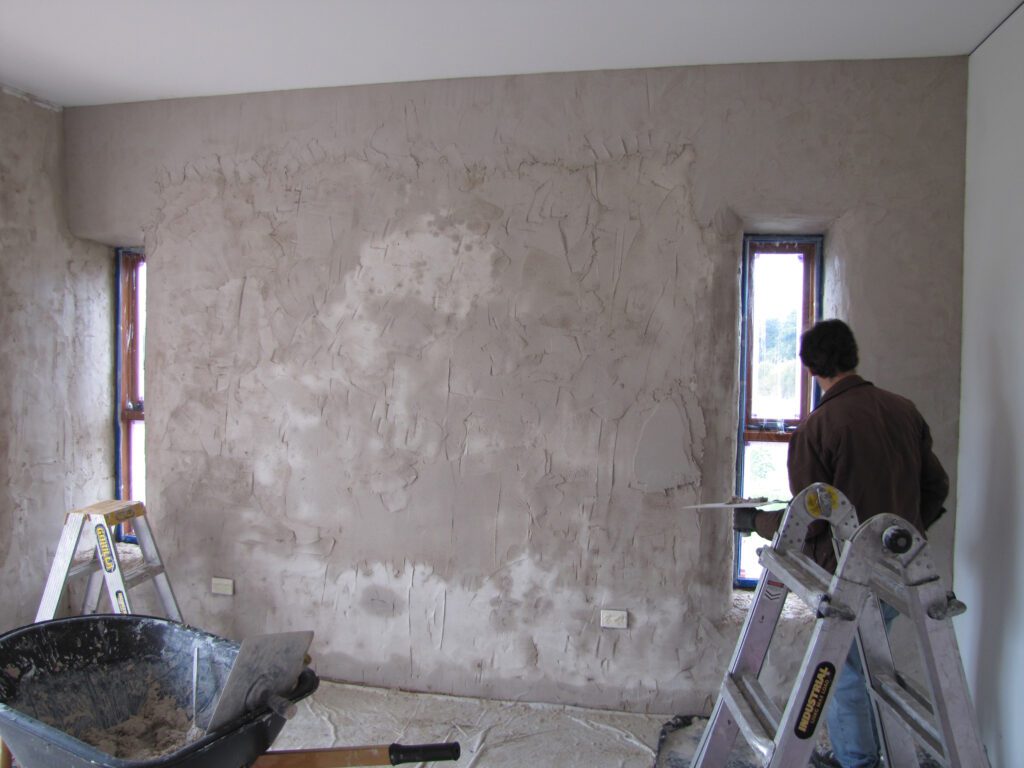Discover why professional plasterers swear by PVA for plastering and how this simple solution could be the key to achieving that perfect, crack-free finish you’ve been dreaming of.
Understanding PVA and Its Role in Plastering
PVA (Polyvinyl Acetate) is a versatile bonding agent that has become an indispensable tool in modern plastering. This water-soluble synthetic polymer creates a crucial interface between your substrate and fresh plaster, fundamentally improving adhesion and overall finish quality. At Kent Plasterers, we’ve witnessed firsthand how PVA can transform challenging surfaces into ideal bases for plastering. The science behind PVA’s effectiveness lies in its unique molecular structure, which creates a strong bond while regulating moisture absorption – a critical factor in achieving that perfect finish.
The Critical Benefits of Using PVA Before Plastering
- Enhanced Adhesion: Creates a tacky surface that significantly improves plaster grip
- Moisture Control: Prevents rapid water absorption that can lead to cracking
- Uniform Drying: Ensures even curing across the entire surface
- Reduced Cracking: Minimises the risk of shrinkage cracks by up to 75%
- Extended Working Time: Gives plasterers more time to achieve the perfect finish
When Is PVA Absolutely Necessary?
Based on our extensive experience in Kent and surrounding areas, PVA is absolutely essential when working with highly absorbent surfaces. These typically include:
Bare Brickwork: The porous nature of brick demands proper sealing
Old Plasterwork: Previous plaster layers can be extremely thirsty
Aerated Blocks: Their honeycomb structure requires thorough sealing
Concrete Surfaces: Despite being less absorbent, benefit from improved bonding
In these scenarios, skipping PVA could result in rapid moisture loss, leading to cracking, delamination, and costly repairs.
Proper PVA Application Techniques
- Mixing Ratio: Typically 1 part PVA to 3-4 parts water for general use
- Application Method: Use a soft brush or roller for even coverage
- Timing: Allow to become tacky (30-120 minutes) before plastering
- Coverage: Apply evenly, avoiding pooling or missed spots
- Temperature Consideration: Best applied between 10-25°C
Common Misconceptions About PVA in Plastering
Through our years of experience at Kent Plasterers, we’ve encountered numerous myths about PVA usage. Let’s debunk the most common ones: Firstly, PVA is not a waterproofing solution – it’s a bonding agent. Secondly, adding PVA directly to plaster mix is a misconception that can actually weaken the plaster. Thirdly, multiple coats of PVA don’t necessarily create a better bond; in fact, they might create a barrier that prevents proper adhesion.
When Can You Skip the PVA?
While PVA is crucial in many scenarios, there are situations where it might not be necessary. Modern plasterboard with paper facing usually doesn’t require PVA priming, as it’s designed to provide adequate suction. Similarly, surfaces treated with suitable bonding agents or specially manufactured boarding materials might not need additional PVA. However, when in doubt, we always recommend erring on the side of caution – the cost of applying PVA is minimal compared to the potential cost of failed plastering.
Professional Tips for PVA Success
- Always clean and prepare surfaces thoroughly before applying PVA
- Test absorbency by spraying water – if it soaks in immediately, PVA is needed
- Apply in temperatures above 5°C for optimal results
- Ensure adequate ventilation during application and drying
- Store PVA properly – prevent freezing and keep containers sealed
The Cost Factor: Is PVA Worth the Investment?
At typically £10-15 per litre for quality PVA, the cost might seem significant for smaller projects. However, consider this: repairing failed plasterwork can cost upwards of £500 per room. Our data shows that proper PVA usage reduces callback rates by over 90%. When you factor in the potential costs of repairs, time lost, and reputation damage, PVA becomes an extremely cost-effective insurance policy for your plastering work.
Making the Right Choice for Your Project
The decision to use PVA should be based on your specific project requirements. For most residential and commercial projects in Kent, we strongly recommend incorporating PVA into your plastering process. The small additional cost and time investment provide significant returns in terms of finish quality and longevity. Remember, professional results come from following professional practices – and PVA usage is firmly established as best practice in modern plastering. For the best results, always consult with experienced plasterers who can assess your specific needs and recommend the most appropriate approach for your project.
FAQ
How many coats of PVA before skimming?
We essentially want to apply 2 coats of PVA at a 3:1 ratio to our walls. You apply the first coat, wait for it to completely dry and then apply the second coat. The second coat is slightly different. You want to roll this on just before you start plastering and wait for it to take up.
Is SBR or PVA better for plastering?
PVA vs SBR PVA is always a good choice as a primer for standard plastering: it does the job well and is cost-effective. We would only recommend SBR for this application if the substrate to be plastered over is poor quality, i.e. old, flaky plaster.
Sources
[1] https://www.adkwik.co.uk/industry-news/pva-glue-for-plaster-how-long-to-leave-pva-before-plastering/
[2] https://www.toolstation.com/help-and-advice/how-to-guides/how-to-pva-wall
[3] https://judgeplastering.com/what-happens-if-you-dont-pva-before-plastering/

